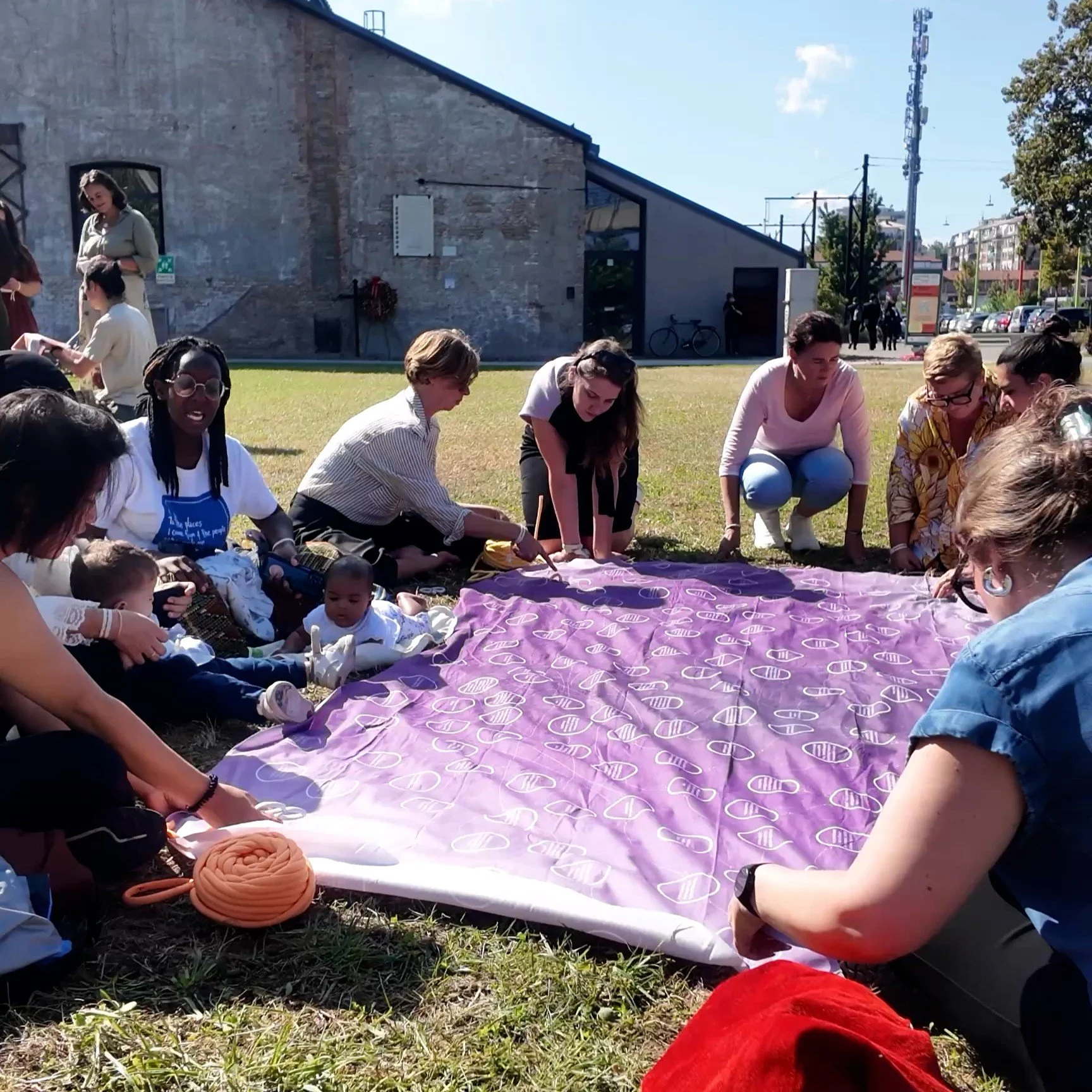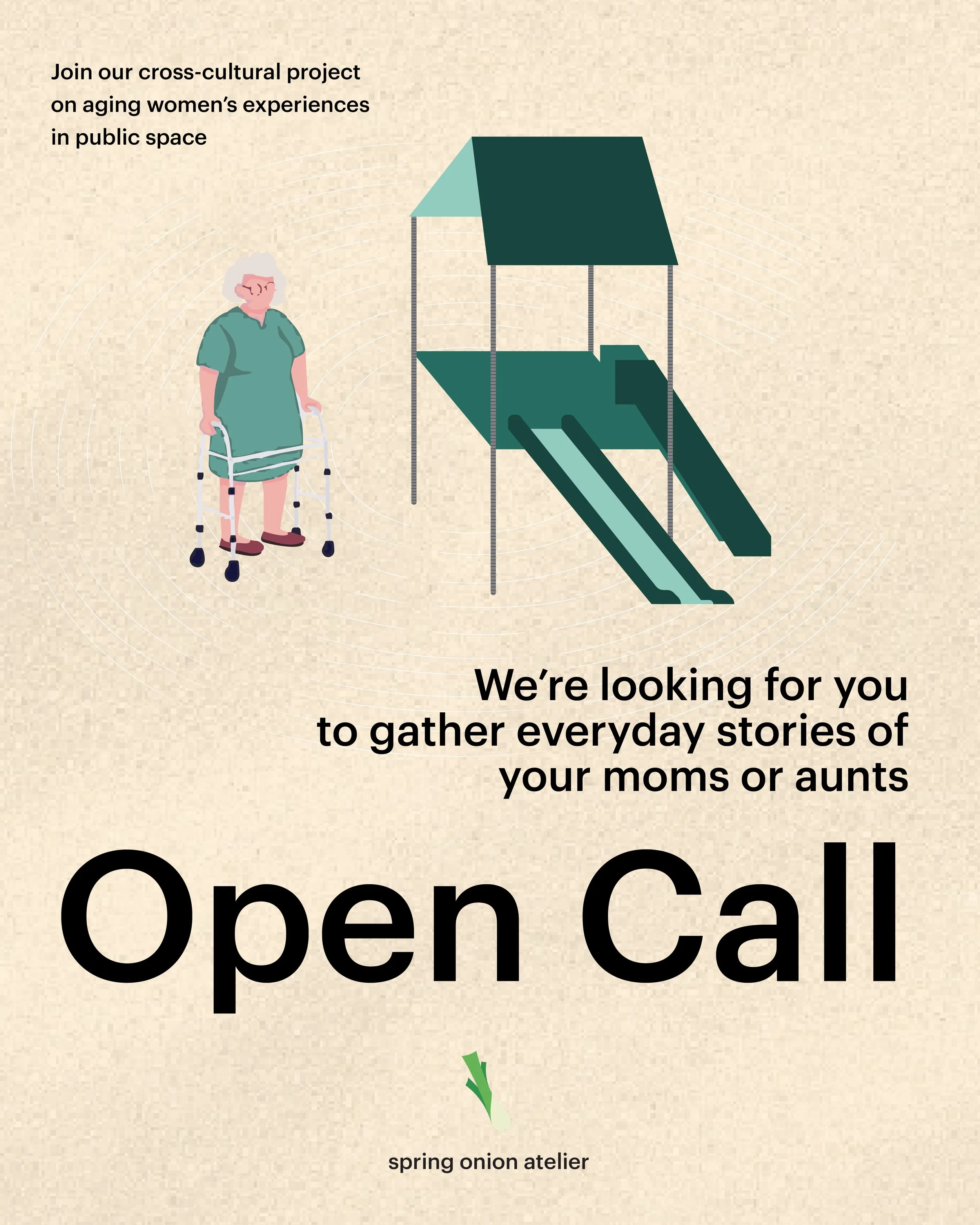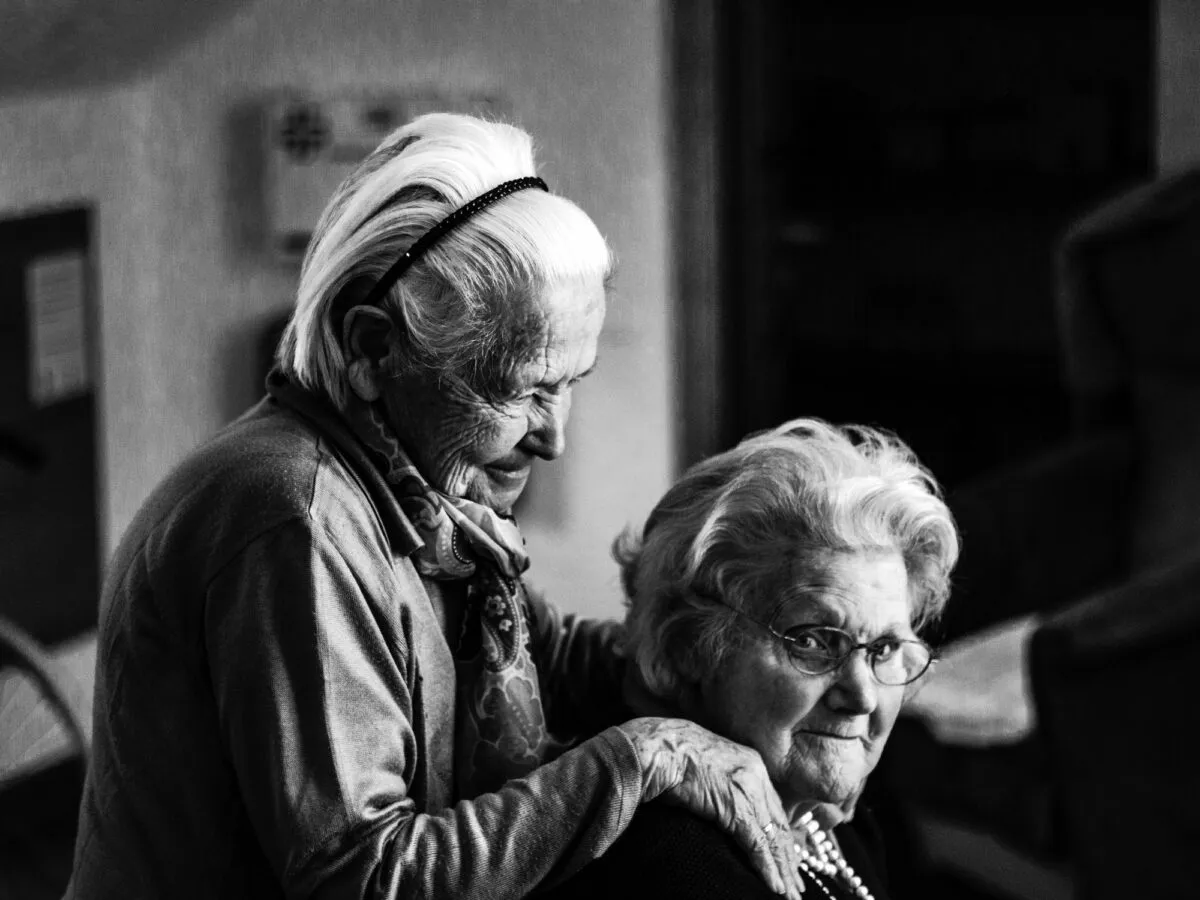Holding her Fall
Tracing the lives of aging women across cultures to uncover how migration history, ethnicity, caregiving backgrounds, socio-economic conditions, and other intersecting factors converge in everyday spaces and shape their visibility, feelings, and connection.
Why This Matters
Across Europe and beyond, ageing has become a silent design emergency. While cities are growing older, the discussion about how ageing interacts with gender, work, care, and spatial inclusion remains largely invisible. The topic is often treated as private and medical rather than collective and urban. Yet the way societies design for ageing through housing, public space, and social infrastructure reveals their deeper values: how they define dignity, interdependence, and belonging.
Women experience ageing differently. They live longer, often with lower incomes and fewer safety nets. They shoulder unpaid caregiving and face declining visibility in public life. Despite decades of progress in gender equity, the conversation rarely extends into later years. Holding Her Fall addresses this gap by reframing ageing not as an individual decline but as a spatial, cultural, and social phenomenon that demands collective imagination.
About the Session
The 75-minute outdoor session at Placemaking Week Europe 2025 marked the pilot workshop of the wider initiative Holding Her Fall, a cross-cultural exploration of ageing, gender, and spatial justice through the language of play. Hosted by Spring Onion Atelier in collaboration with Ethiopian researcher Meron Girma Woldeyohannise, the session brought together 25 female placemakers from diverse cities and disciplines to reflect on how women experience ageing in contemporary urban environments.
Set against the industrial backdrop of Reggiane Parco Innovazione in Reggio Emilia, the open lawn became a temporary field laboratory. Through storytelling, data visualisation, and embodied participation, participants tested three playful methods designed to translate complex social research into experiential understanding. The workshop asked a simple but urgent question: How might public space hold, rather than overlook, the process of ageing for women?
Project Background, Research and Objective
The project originated from personal conversations among the founders of spring onion atelier, all living abroad in their mid-thirties and navigating long-distance caregiving for their parents. These experiences prompted a broader inquiry into how different societies define “elderly women” and how gender norms influence later life.
The research began with desk studies, interviews, and experience mapping conducted across four countries: the Netherlands, Italy, China, and Ethiopia. Interviews and field observations across four countries revealed a shared paradox: although ageing is universal, it is not experienced equally. Women’s experiences are shaped by cumulative disadvantages—unequal pay, unpaid labour, cultural expectations, and access to care.
The objective of Holding Her Fall is not to produce another research report, but to translate intersectional insights into collective understanding. By transforming data into participatory games, the session invites younger generations, designers, and placemakers to confront the long-term consequences of today’s social structures and spatial systems.
The Games
The workshop unfolds through three interactive games, each staged on custom-designed picnic carpets. These carpets act as both research surfaces and gathering spaces, inviting participants to sit, move, and talk together. Through touch, arrangement, and repair, the carpets transform abstract data into shared physical experience, turning public ground into a living research platform.
Game 1 — Puzzle of Numbers
The first carpet appears fragmented. Cut into irregular pieces, its surface carries data from Ethiopia, Italy, the Netherlands, and China, across five themes: work, family, social life, health, and age. Each fragment holds two halves, one numerical and one interpretative. Participants mix and match the pieces, connecting data points through conversation until a coherent picture emerges. Once assembled, they sit around the carpet to discuss what stands out or surprises them. The carpet becomes a collaborative map, a tactile representation of how inequality, care, and resilience intersect across cultures.
Game 2 — Fiction of Hers
Based on 13 interviews, Fiction of Hers transforms ethnographic research into participatory storytelling. Each participant steps into the life of a woman from a different cultural context and makes decisions on her behalf. The branching narratives reveal how family expectations, financial security, and health systems shape identity and agency. Participants gather around a second carpet, reading each story aloud while advancing the woman’s journey by needling directly into the textile. Each stitch marks a decision, an act of care or resistance. Over time the surface wrinkles and lifts, symbolising how life choices leave traces, much like the lines on ageing skin.
Game 3 — River of Life
The final carpet traces a continuous river guiding participants through a woman’s life from childhood to old age. The game draws on Life Course Theory by Elder and Eriksonian developmental psychology, situating ageing as an evolving process rather than a fixed stage. Each participant embodies the same woman at a different age, making choices that ripple across time. Illustrated life cards mark turning points such as education, work, partnership, motherhood, migration, health, and end-of-life care. As the story unfolds, players speak to one another across time, linking personal agency with social circumstance.
By the end, the three carpets come together to form a temporary public forum, a spatial platform for debate, storytelling, and shared reflection. What is often unspoken in public life becomes tangible here: the quiet negotiations of ageing, gender, and care that usually unfold in private. The carpets transform the lawn into a civic living room, where research becomes conversation and conversation becomes collective awareness. In doing so, Holding Her Fall reclaims public space as a site for empathy and dialogue, a place where the invisible dimensions of everyday life can finally be seen and discussed.
Reflections and Next Steps
Participants described Holding Her Fall as both reflective and restorative, a rare opportunity to discuss ageing women in an open, non-hierarchical format. Many noted how the use of play helped unpack a difficult topic without detachment or pity. The diversity of participants led to spontaneous cross-cultural comparisons, revealing how ageing narratives shift between contexts yet share common emotional ground.
The feedback was clear: there is a growing need for spaces that connect intergenerational dialogue with spatial practice. Following the pilot workshop, Holding Her Fall received invitations to extend the format in universities, cultural institutions, and civic programmes across Europe. The next phase will deepen its intersectional lens on ageing, exploring how gender, class, ethnicity, and care intersect in shaping our experience of public space.
Rather than remaining a research format, Holding Her Fall seeks to move from dialogue to design. Its ambition is to co-create real public spaces and neighbourhoods that are truly inclusive for all generations, including ageing women, places where empathy is not only discussed but spatially enacted.
Video
Game Nights in Motion
Facts & Credits
Location: Reggio Emilia, Italy
Program & Size: 75-min outdoor session at Placemaking Europe Week 2025, 3 picknick carpets of 3.5m x 2m
Time: 24th Sep 2025
Curator and Designer: spring onion atelier
Design Team: Yang Zhang, Jammy Zhu, Chun Hoi Hui
Key Partners: Meron Girma Woldeyohannise, PlaySpace, Patrizia Bucciarelli, Paola Tovar, Yimeng Wang
Photographer: Jammy Zhu








